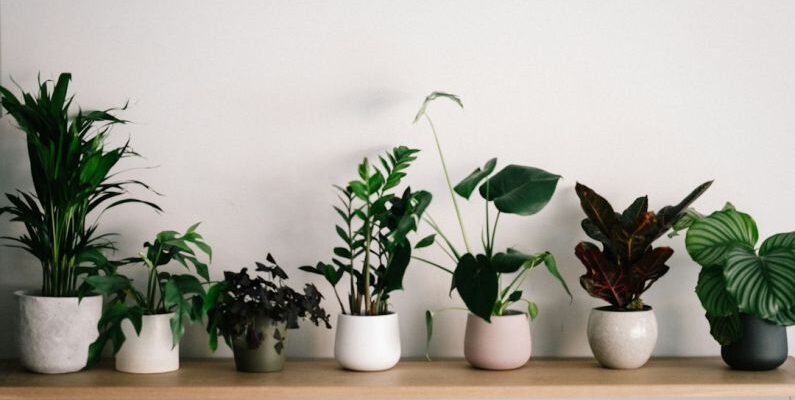Elevating your living space can be a thrilling venture, sparking the imagination and creating a fresh ambiance in your home. One emerging trend in home decor that has garnered significant attention is the use of upcycled furniture. Upcycled furniture not only adds a unique charm to your living space but also offers a sustainable and eco-friendly alternative to traditional furniture choices. Let's delve into how upcycled furniture can transform your living space into a stylish and environmentally conscious haven.
Home Decor
In Home Decor
Lighting plays a crucial role in the overall ambiance and aesthetics of a space. It has the power to transform a room, enhancing its decor and creating different moods. When it comes to choosing lighting for your home, there are several factors to consider to ensure that it complements your decor seamlessly. From the type of lighting fixtures to the brightness and color temperature, each element contributes to the overall design scheme. By understanding how to choose lighting that enhances your decor, you can create a beautifully illuminated space that reflects your style and personality.
Understanding Your Space
Before selecting lighting fixtures for your home, it's essential to understand the layout and function of each room. Consider the size of the space, the natural light it receives, and the activities that take place there. For example, a kitchen may require bright, task lighting for food preparation, while a bedroom could benefit from softer, ambient lighting for relaxation. By assessing the specific needs of each room, you can choose lighting that not only enhances the decor but also serves a practical purpose.Types of Lighting Fixtures
There are three main types of lighting fixtures: ambient, task, and accent lighting. Ambient lighting provides overall illumination for a room and sets the general mood. This can be achieved through ceiling lights, chandeliers, or wall sconces. Task lighting, on the other hand, is focused and directional, ideal for activities such as reading or cooking. Desk lamps, under-cabinet lights, and pendant lights are common examples of task lighting. Accent lighting is used to highlight specific features or create visual interest, such as artwork or architectural details. Consider a mix of these lighting types to create a layered and dynamic lighting scheme in your home.Choosing the Right Bulbs
The type of bulbs you choose can significantly impact the ambiance and color rendering of a space. LED bulbs are energy-efficient and long-lasting, making them a popular choice for modern lighting designs. They come in various color temperatures, ranging from warm to cool tones. Warm light (2700-3000 Kelvin) creates a cozy and inviting atmosphere, perfect for living rooms and bedrooms. Cool light (4000-5000 Kelvin) is crisp and bright, suitable for kitchens and workspaces. Consider the color temperature of the bulbs to ensure they complement the decor and function of each room.Matching Lighting to Decor Style
When selecting lighting fixtures, it's essential to consider the overall style of your decor. Choose fixtures that complement the existing design elements, whether it's modern, traditional, industrial, or eclectic. For a contemporary look, sleek and minimalistic fixtures with clean lines work well. Traditional spaces benefit from ornate chandeliers or vintage-inspired sconces. Industrial decor pairs nicely with exposed bulb pendants or metal fixtures. By matching the style of the lighting to your decor, you can create a cohesive and harmonious design scheme.Creating a Focal Point
Lighting can also be used to create a focal point in a room, drawing attention to a specific area or feature. Consider using a statement chandelier above a dining table or a cluster of pendant lights in a reading nook to add visual interest and drama. By strategically placing lighting fixtures, you can highlight architectural elements, artwork, or furniture pieces, enhancing the overall decor of the space. Experiment with different heights and angles to create a dynamic interplay of light and shadow that adds depth and dimension to the room.Incorporating Dimmers and Controls
To further enhance your decor and create a customizable lighting experience, consider incorporating dimmers and lighting controls. Dimmer switches allow you to adjust the brightness of the lights to suit different activities and moods. This versatility is especially useful in spaces like the living room or bedroom, where lighting needs can vary throughout the day. Smart lighting systems offer even more control, allowing you to adjust the color temperature, brightness, and even schedule lighting scenes from your smartphone or voice assistant. By integrating dimmers and controls into your lighting design, you can elevate the ambiance of your home and create a personalized lighting experience.Conclusion: Illuminating Your Style
Choosing lighting that enhances your decor is an essential aspect of interior design that can elevate the overall look and feel of your home. By understanding your space, selecting the right fixtures, bulbs, and controls, and matching the lighting to your decor style, you can create a beautifully illuminated space that reflects your personality and taste. Whether you're aiming for a cozy and intimate atmosphere or a bright and modern aesthetic, thoughtful lighting choices can make a significant impact on the ambiance and functionality of your home. Experiment with different lighting options, layering fixtures and adjusting brightness levels to create a personalized and inviting space that truly illuminates your style.
In Home Decor
When it comes to creating a healthy indoor environment, one often overlooked aspect is the quality of the air we breathe. Indoor air pollution can be a significant concern, as many common household items and activities can release harmful toxins into the air. One effective way to combat this issue is by incorporating houseplants into your living space. Not only do plants add a touch of nature to your home decor, but they also have the ability to purify the air, making it fresher and cleaner. In this article, we will explore some of the best plants for improving indoor air quality.
**Peace Lily**
The Peace Lily is a popular choice for indoor plants due to its elegant white flowers and low maintenance requirements. In addition to its aesthetic appeal, the Peace Lily is also an excellent air purifier. It can remove common indoor pollutants such as formaldehyde, benzene, and trichloroethylene. This plant thrives in low light conditions, making it perfect for rooms with limited sunlight.
**Spider Plant**
The Spider Plant is another great option for improving indoor air quality. This resilient plant is known for its ability to remove toxins like formaldehyde and xylene from the air. Spider Plants are easy to care for and can adapt to a variety of lighting conditions, making them a versatile choice for any indoor space.
**Snake Plant**
The Snake Plant, also known as Mother-in-Law's Tongue, is a hardy plant that is nearly impossible to kill. It is highly effective at filtering out formaldehyde, trichloroethylene, and benzene from the air. Snake Plants are ideal for bedrooms, as they release oxygen at night, making them a great choice for improving sleep quality.
**Aloe Vera**
Aloe Vera is not only a handy plant to have for its soothing gel, but it also serves as a natural air purifier. This succulent is effective at removing formaldehyde and benzene from the air. Aloe Vera plants require minimal care and thrive in bright, indirect sunlight.
**Boston Fern**
The Boston Fern is a popular choice for indoor plant enthusiasts due to its lush foliage and air-purifying properties. This plant is excellent at removing pollutants like formaldehyde and xylene from the air. Boston Ferns thrive in humid conditions, so be sure to mist them regularly to keep them healthy and vibrant.
**Rubber Plant**
The Rubber Plant is a low-maintenance option that is effective at removing toxins like formaldehyde from the air. This plant has large, glossy leaves that add a touch of greenery to any space. Rubber Plants prefer bright, indirect light and occasional watering.
**English Ivy**
English Ivy is a versatile plant that can be grown indoors or outdoors. It is known for its ability to filter out airborne mold and other allergens, making it a great choice for those with respiratory issues. English Ivy is easy to care for and can thrive in a variety of lighting conditions.
**Conclusion: Creating a Healthier Indoor Environment with Plants**
In conclusion, incorporating houseplants into your indoor space is a simple and effective way to improve air quality and create a healthier living environment. The plants mentioned above are just a few examples of species that can help purify the air by removing harmful toxins. By introducing these plants into your home, you can enjoy cleaner, fresher air while adding a touch of natural beauty to your surroundings. So, why not bring a little piece of nature indoors and reap the benefits of improved air quality with these air-purifying plants?


